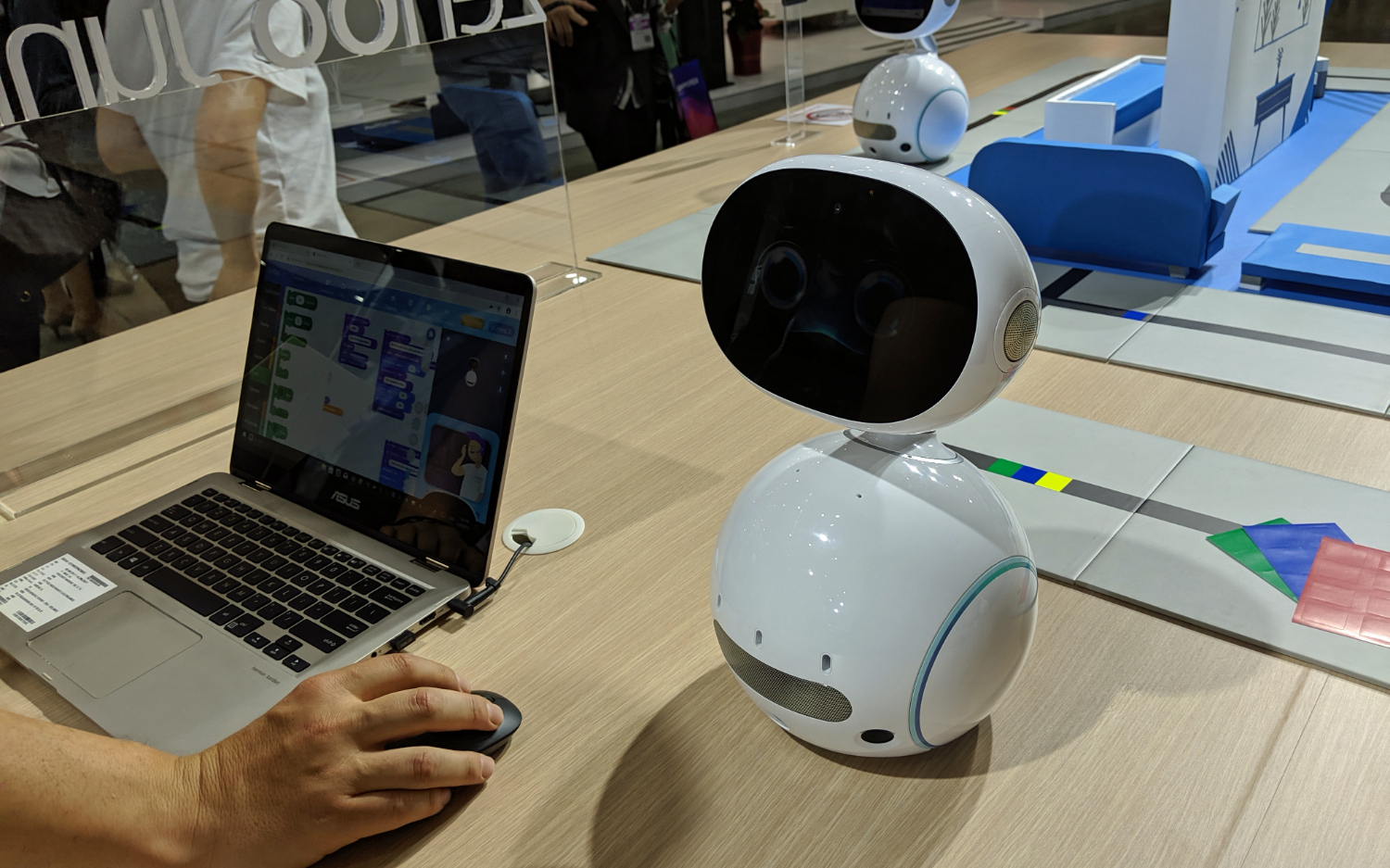Zenbo Junior Robot Coming to America, Will Teach Coding
Asus’s original Zenbo robot is one of Computex’s greatest disappointments. In 2016, the company announced the household robot and promised that it would soon be a constant family companion, reading to kids, reminding old people to take their meds and controlling your smart home devices for you. However, the robot never came to the U.S. and was released in Taiwan with little fanfare.
Now, Asus is back with Zenbo Junior and it’s coming to the United States . . . sortof. This new version of the robot is much smaller and it’s made primarily to teach children about programming. And according to Asus, it’s already shipping in China.
At Asus’s Computex booth, I had a chance to see Zenbo Junior in person and it certainly has a lot of potential as a STEM learning tool. Like the original Zenbo, it looks like a real-life version of EVE from WALL-E, complete with a rounded white head with a digital screen for its face. It has no arms, but it has wheels on the bottom to roll around. The robot measures 7.3 x 7.3 x 12.5 inches (18.5x18.5x31.5 cm) and weighs 6.1 pounds (2.75 kg).
The Zenbo Junior has a good number of sensors and ways to communicate. The bottom of the robot has a line sensor that it uses to follow lines and obey commands when it sees color patterns, something I’ve seen on a number of kids’ robots including Ozobot. In a demo at the booth, a robot rolled around a board, following a line.
The robot also has a distance sensor, and a drop sensor to keep it from hitting objects or falling off of tables. It has a speaker for talking and a microphone that it can use for recording or potentially voice recognition and a 13-MP camera. Its face is a 6-inch color LCD touch screen that runs Android and you can even use it for apps when it’s not showing the robot’s eyes.
According to Asus’s spec sheet, the robot can last for up to four hours of continuous use. When it comes to the U.S., it will also offer Alexa support. If you pet the head, a sensor detects your touch and makes the robot’s eyes appear to smile. But the real purpose of the robot is not to just follow lines, run Android apps and be petted.
Kids can program Zenbo Junior using Zenbo Lab, a computer application that uses a block-based coding language. With most kids’ robots, children can only use blocks and never have the opportunity to graduate to adult, text-based code. However, with Zenbo Junior, they’ll also be able to program it with Python or Java.
Get Tom's Hardware's best news and in-depth reviews, straight to your inbox.
With powerful coding software, a lot of functionality and an attractive design, the Zenbo Junior could be a great STEM toy for children or hobbyists, but right now, Asus won’t be selling to consumers at all. The company lists no price for Zenbo Junior but instead invites schools and businesses to contact it to buy them, presumably in bulk.
What’s really odd about Asus’s B2C-only sales strategy is that the company is counting on school districts, which have tight budgets and a ton of STEM-toy makers vying for their attention or on companies that want to use Zenbo Junior to entertain guests. But it’s hard to imagine either schools or businesses wanting users to have Alexa, which is a key feature that Asus is adding.
So, if you’ve been pining away for Zenbo and were hoping you could get a small, programmable one for home, you’re out of luck . . . for now. However, it’s always possible that your child’s school will get one, you’ll see one at hotel or that Asus will change its strategy and sell to home users.
Avram Piltch is Managing Editor: Special Projects. When he's not playing with the latest gadgets at work or putting on VR helmets at trade shows, you'll find him rooting his phone, taking apart his PC, or coding plugins. With his technical knowledge and passion for testing, Avram developed many real-world benchmarks, including our laptop battery test.



